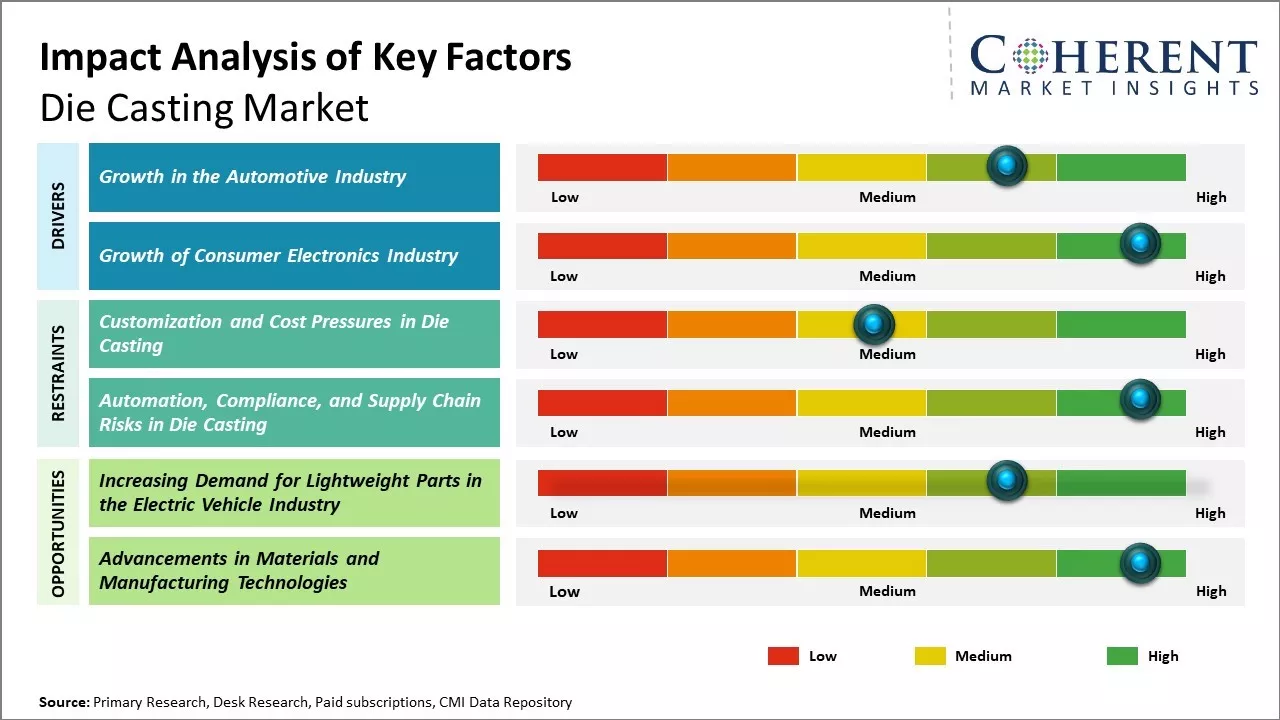The die casting market is estimated to be valued at US$ 83.99 billion in 2025 and is expected to reach US$ 139.43 billion by 2032, exhibiting a compound annual growth rate (CAGR) of 7.5% from 2025 to 2032. Die casting is commonly used in automotive applications where it is valued for its ability to produce complex shapes in high volumes for components like engine parts.

To learn more about this report, Request sample copy
The demand for die casting is expected to be primarily driven by the automotive industry over the coming years. As electric vehicles see higher adoption rates, die casting will play a key role in manufacturing drivetrain components like motors and transmission parts which require precision. Growth in other industries such as consumer electronics will also support the rising demand for die casting techniques to manufacture housings, frames, and other metal parts.
Growth in the Automotive Industry
The automotive industry has experienced steady growth over the past couple of decades. Increasing vehicle production across the globe is boosting the need for high-quality and cost-effective die casting components. Automakers around the world are manufacturing more vehicles every year to cater to the growing demand from consumers. This rise in automotive manufacturing is fueling the need for numerous die casted auto parts such as engine parts, transmission components, steering parts, and other complex structural components.
Most die casted parts in the automotive industry have intricate designs and tighter tolerances for dimensional accuracy. This ensures smooth operation and efficient performance of vehicles. Die casting is preferred over other manufacturing processes as it allows for complex designs to be casted in high volumes at reasonable costs. It also helps automakers comply with various performance and emissions standards more effectively. With automakers continuing to launch new vehicle models every year and older models seeing demand, the production of die casted auto components is poised to grow substantially. Various auto market forecasts indicate vehicle manufacturing will increase steadily over the coming years across both developed and emerging nations. This bodes well for the die casting industry as it further expands its penetration in the automotive sector.
For instance, in March 2021, Rheinmetall AG secured an engine block supply contract exceeding EUR 100 million for a prominent Germany-based car manufacturer, with full-scale production slated to commence in 2023 and contract duration extending beyond 2030.
Joining thousands of companies around the world committed to making the Excellent Business Solutions.
View All Our Clients